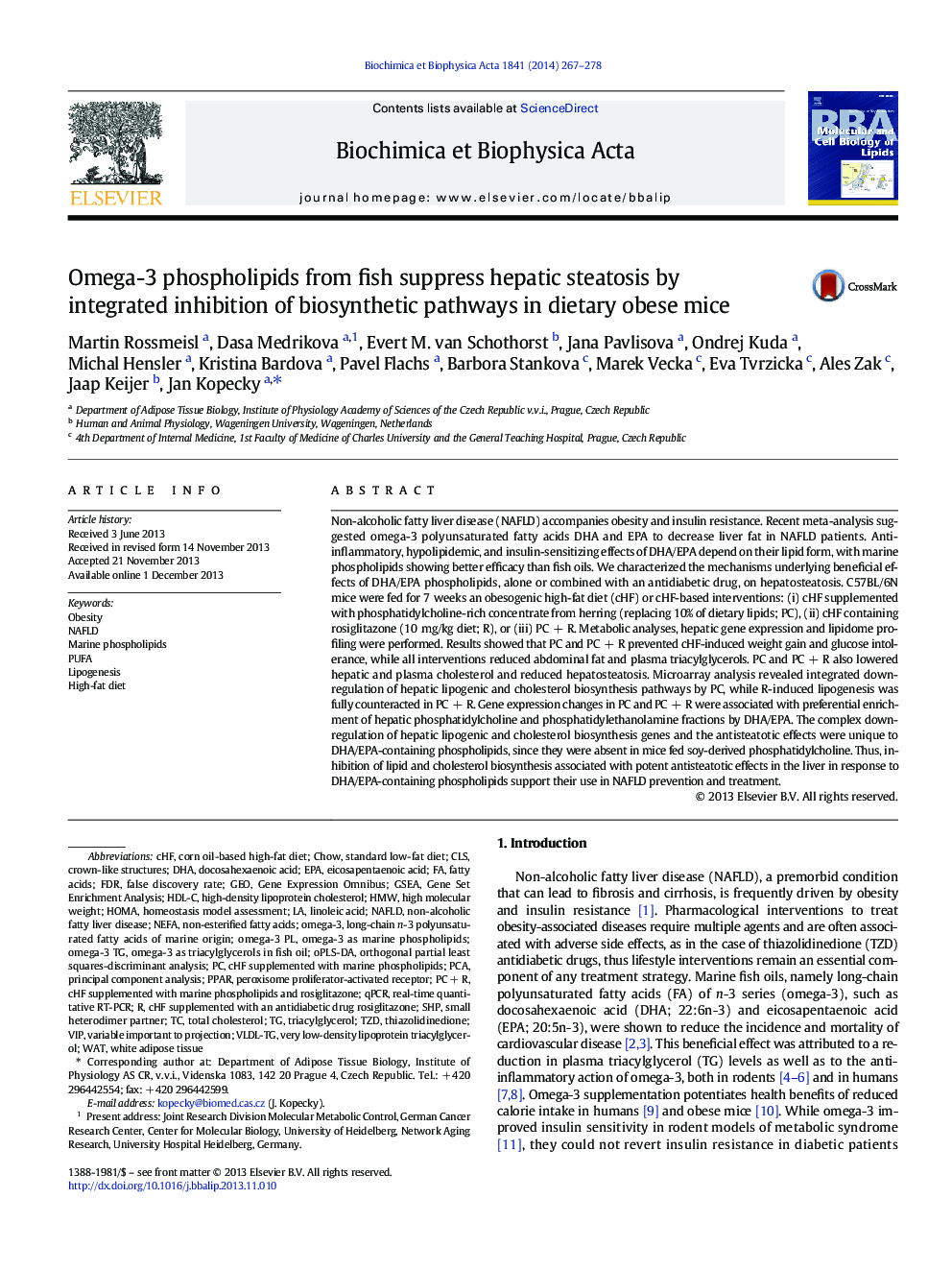| Article ID | Journal | Published Year | Pages | File Type |
|---|---|---|---|---|
| 1949213 | Biochimica et Biophysica Acta (BBA) - Molecular and Cell Biology of Lipids | 2014 | 12 Pages |
•Omega-3 fatty acids (omega-3) reduce obesity and hepatosteatosis in rodents.•Omega-3-containing marine phospholipids (PL) show better efficacy than fish oils.•Omega-3 PL reduce hepatosteatosis by inhibiting lipogenesis/cholesterol biosynthesis.•Soy-derived PL devoid of omega-3 are ineffective.•The complex effect of omega-3 PL suggests their potential use in NAFLD treatment.
Non-alcoholic fatty liver disease (NAFLD) accompanies obesity and insulin resistance. Recent meta-analysis suggested omega-3 polyunsaturated fatty acids DHA and EPA to decrease liver fat in NAFLD patients. Anti-inflammatory, hypolipidemic, and insulin-sensitizing effects of DHA/EPA depend on their lipid form, with marine phospholipids showing better efficacy than fish oils. We characterized the mechanisms underlying beneficial effects of DHA/EPA phospholipids, alone or combined with an antidiabetic drug, on hepatosteatosis. C57BL/6N mice were fed for 7 weeks an obesogenic high-fat diet (cHF) or cHF-based interventions: (i) cHF supplemented with phosphatidylcholine-rich concentrate from herring (replacing 10% of dietary lipids; PC), (ii) cHF containing rosiglitazone (10 mg/kg diet; R), or (iii) PC + R. Metabolic analyses, hepatic gene expression and lipidome profiling were performed. Results showed that PC and PC + R prevented cHF-induced weight gain and glucose intolerance, while all interventions reduced abdominal fat and plasma triacylglycerols. PC and PC + R also lowered hepatic and plasma cholesterol and reduced hepatosteatosis. Microarray analysis revealed integrated down-regulation of hepatic lipogenic and cholesterol biosynthesis pathways by PC, while R-induced lipogenesis was fully counteracted in PC + R. Gene expression changes in PC and PC + R were associated with preferential enrichment of hepatic phosphatidylcholine and phosphatidylethanolamine fractions by DHA/EPA. The complex down-regulation of hepatic lipogenic and cholesterol biosynthesis genes and the antisteatotic effects were unique to DHA/EPA-containing phospholipids, since they were absent in mice fed soy-derived phosphatidylcholine. Thus, inhibition of lipid and cholesterol biosynthesis associated with potent antisteatotic effects in the liver in response to DHA/EPA-containing phospholipids support their use in NAFLD prevention and treatment.
